1986 Elite Systems
Platforms: Commodore 16 and Plus/4
This is a smaller piece intended for inclusion in The Games That Weren’t book that didn’t make the final cut. As a result, please note that it hasn’t been professionally proof read compared to the published pieces in the book. As part of our Bonus material series, here is the full raw article for your enjoyment.
Mention Elite Systems, and you may instantly think of Capcom 8-bit home computer conversions such as Commando, Ghosts n Goblins and also the cult classic shooter 1942. If you hadn’t already guessed, 1942 is set during World War 2, controlling an American plane fighting against swarms of Japanese fighter planes across 32 levels – oddly set in a reverse order.
Capcom are a Japanese based development company, and so the theme of the title had caused some controversy back home at the time. Regardless of any political issues, it still became very popular and made for a perfect title to port to all of the home computers of the time. Elite were the company to step up to the plate and grab the rights for the major 8-bit home computer platforms.
Elite were once the kings of licences along with Ocean Software during the 80’s, and Capcom was one of a few arcade companies that they obtained arcade conversion rights. Conversions of 1942 for the Amstrad, Commodore 64 and ZX Spectrum would end up being reasonable, though underwhelming overall. At the time, the Commodore 16 (C16) had a fairly active user base, but was just about hanging on, after a not so successful launch as anticipated. Subsequent ‘fire sales’ of the platform by Commodore would though result in giving its user base a small boost.
Any expectation of the game appearing just vaporized, along with the platform itself in time.
Companies such as Elite would continue to support the system and its users, which resulted in 1942 being scheduled for release and included within adverts of the time towards the end of 1986. Before the year was out, most of the other 8-bit users were soon getting their opportunity to blast swarm after swarm of enemy planes, but C16 users were still anxiously waiting for their chance. Months went by with nothing surfacing, until eventually any expectation of the game appearing just vaporized, along with the platform itself in time.
Furtherly upsetting to software starved C16 users, were the teasing inclusion of loading instructions for their computer within the released versions. Surely this meant that something had to have been started, but even if it had, then there was nothing from Elite to say why the title never got to stores. Eventually the budget re-release on Elite’s ‘Encore’ label would remove any trace of the C16 version ever existing.
For years, the conversion has gone on to become of the big unreleased game mysteries for the platform, with many enthusiasts trying in vain to find out what happened exactly. Luca Carrafiello (webmaster of Plus/4 World) explains how desperate it was at the time as a C16/Plus4 supporter waiting for Elite’s conversion. “1942 is absolutely one of the most wanted games on the C16 and Plus/4, just as Space Harrier is too.” he began. “Sceners and users had anticipated that game so much that it inspired an April fools’ joketro too. Those two titles by Elite Systems were the games with the strongest clues of all for their existence.”
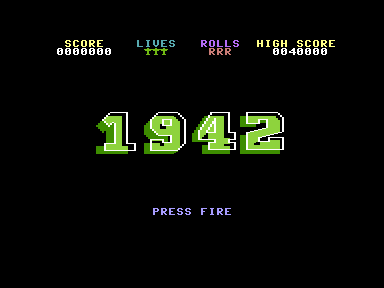
Rumours had been plentiful over the years, including one suggestion that Gremlin Graphic’s 1986 blaster Reach for the Sky may have originally been an official conversion of the Capcom classic. Deep within its code were the words “Midway 1942” adding fuel to that particular fire. Developer Jason Perkins was quick to put that fire out however. “Reach for the Sky was only ever a ‘love letter’ to 1942, which I was playing down the pub at the time. I was never contacted about doing an official version of it.” he confirmed.
“It was multicolour based like the C64 version and there would have been a significant amount of enemies in the game.”
In the era of the internet, Facebook and the Plus/4 World website were to become source of the answer of who exactly was behind the conversion. Richard Ikin surfaced to announce that he was the developer of the illusive conversion, along with a few other Elite titles (including Airwolf). “I started writing a conversion around 1986 time for Elite.” he began. “It was multicolour based like the C64 version and there would have been a significant amount of enemies in the game.”
Richard could not recall if anyone worked on the graphics for him. It was wondered if perhaps Ray Tredoux (who worked with Richard on the C16 conversion of Commando). However, Ray confirmed that he wasn’t involved, and suggested it was probable the conversion was underway at a time when Elite switched many staff (Ray and Richard included) from in-house to freelance.
Many Elite staff from the time were also asked regarding the graphic artist credit, including Steve Wilcox, Neil Bate and Jon Harrison. No one could recall, though it is suggested that it was likely Rory Green if anyone. At the time of writing, Rory hasn’t responded to any enquiries to confirm.
Seemingly working on his own with tight memory limits and a lack of hardware sprites, there were obvious cut backs that had to be made by Richard. “Nothing was designed to be too big. Obviously, because of the limitations, the variety of enemies was restricted but the number could be plentiful.” he explained. “For backgrounds, we had to limit things so there would not have been too much use of those. Clever use of compression allowed creation of some background elements, but the memory restrictions just would not allow much, particularly if we wanted to get a good game in there.”
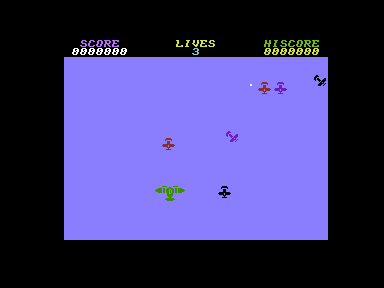
Regardless of the inevitable cuts, many features were kept and squeezed in. The game would feature most of what the other conversions did, including all the power ups – and even the plane roll effect.
Richard was in full stride and the majority of the engine was coming together well after a short time. However, just as everything was getting towards completion, Elite decided to abruptly cancel the conversion. When asked why, Richard was not sure, but suggested that it was just due to the market drying up for the machine. It seemed an odd decision in that case, considering Elite would go on to release a number of titles beyond 1986 for the platform.
“I’m afraid that, 30 years on, I simply cannot recall why (nor indeed whether) the C16 version of 1942 was cancelled”
It was painfully clear that memories of the exact reason had now completely disappeared with time when Steve Wilcox also had no recollection for the reason. “I’m afraid that, 30 years on, I simply cannot recall why (nor indeed whether) the C16 version of 1942 was cancelled” he responded.
One theory is that Elite cancelled the game due to slowing sales for the platform, but later reversed their decision for other later titles when the C16 and Plus/4 got a second lease of life, thanks discounted sales to Eastern Bloc countries such as Hungary. Another possibility is that development overran and missed a short production window. It may otherwise have simply been down to the quality not being up to scratch that prevented the game from exiting the doors. It’s something we may never know for certain.
Richard surprisingly revealed that 1942 was not too far away at all from being complete at the time of cancellation. “The game just needed collision detection, level endings, hi-score tables and a bit of tidying up if I remember correctly.” he confirmed. A full conversion was indeed almost there, just as C16 users had originally hoped for all along.
In a bizarre move, 1942 was surprisingly resurrected by Richard not too long after the cancellation, but not for Elite. “I wrote another version later which I almost finished, I suspect using code from version 1!” he began. “Version 2 was off my own back. This was never finished as I moved on to other things and it got put on the back burner. This is something I’m intending to put right.”
Unless someone from Elite had kept an old set of tapes or disk box somewhere (which is likely as Elite bringing out C16 games again), then any chance of finding either version are almost non-existent.
When asked about the possibility of resurrecting either of his two developments, Richard confirmed that he no longer had any of his old disks. Searches for the second version believed to still exist proved fruitless. Unless someone from Elite had kept an old set of tapes or disk box somewhere (which is likely as Elite bringing out C16 games again), then any chance of finding either version are almost non-existent. Though when Richard suggested about putting things right, he wasn’t joking.
In 2015, Richard committed himself to doing a brand new 1942 conversion for the C16, to finally bring it to user’s screens and exorcise an old ghost. “1942 is going to be written from scratch. I’ve not been able to trace original code yet, so I’m starting over.” Richard declared at the time. “It is intended to be for the unexpanded machine. I’m in the middle of rewriting Commando C16 first. 1942 will follow, and then my attention will turn to Airwolf. I’ll try and get some screen shots to you as soon as I get to the stage of developing 1942.”
At the time of writing, real life issues sadly got in the way for Richard, so any potential conversion seems to have been put on hold for now.
A long mystery though can finally be put to rest, but is one which seems to still have unfinished business. Can Richard someday provide the game that C16 users craved so much back in 1986? Could the original developments even be found, or is this one arcade conversion that has unfortunately just completely flown away?
Gallery
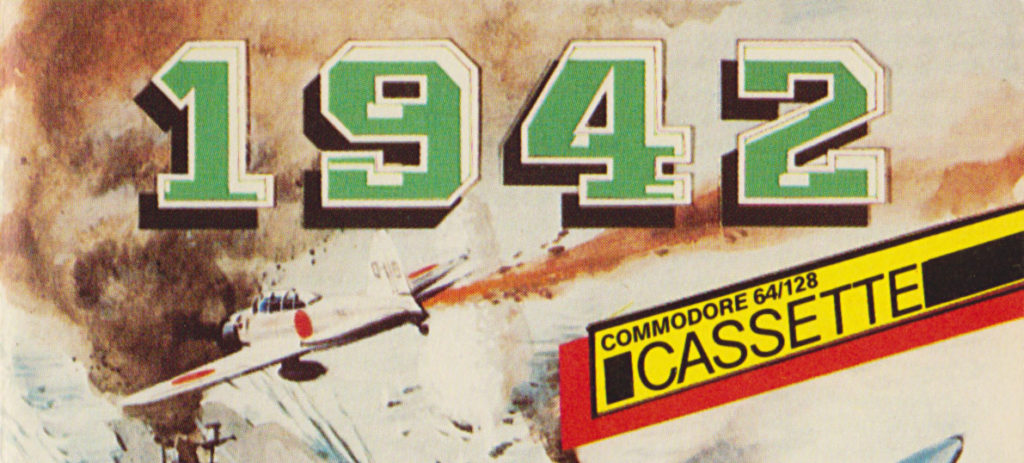
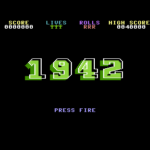
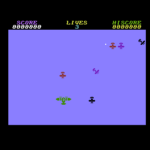
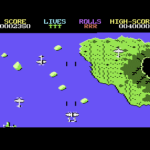

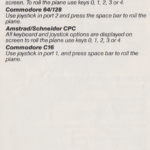


Is it worth chasing Richard Ikin up for any progress on his Titles ? Apologies for being a pest in advance… :->
Last time we spoke, things were on pause due to certain circumstances. I suspect unfortunately this may never get picked up and finished off.
Shame ! But there again – This is why GTW is here…
:->